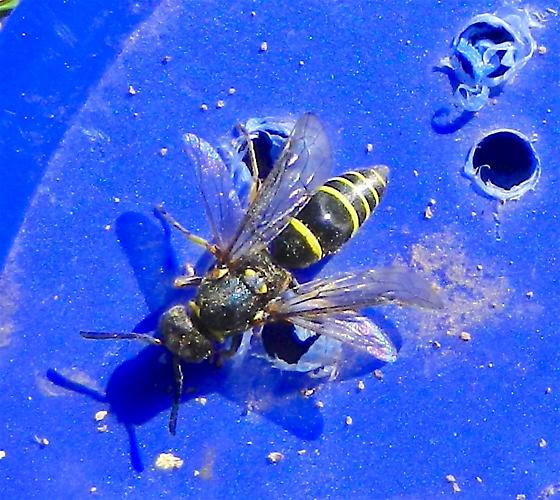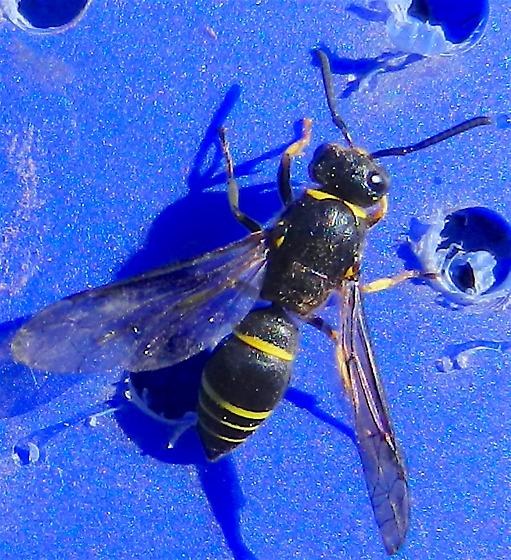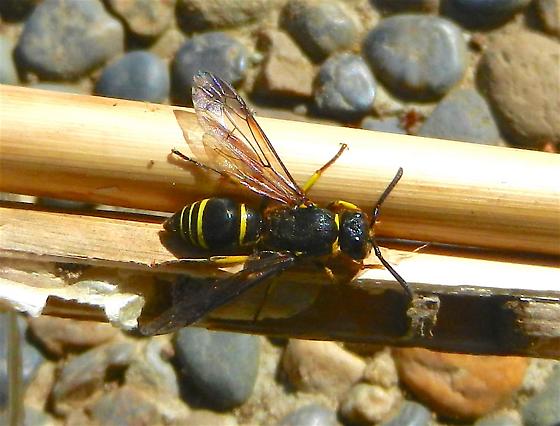ARCHIVAL: This post has been re-dated from 2016 in order to position it closer in the blog to Mason Bee Information
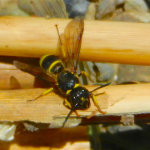
In the previous post I indicated I was trying to identify wasps that had taken up residence in mason bee tubes, without actually parasitizing the mason bees
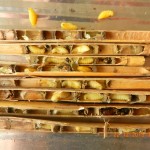 I found the larvae in tubes while removing the mason bee cocoons in the winter, and transferred them to a separate jar where I let them hatch. By May 1 they were hatching so after taking a few pictures, I sent the images off to BugGuide.
I found the larvae in tubes while removing the mason bee cocoons in the winter, and transferred them to a separate jar where I let them hatch. By May 1 they were hatching so after taking a few pictures, I sent the images off to BugGuide.
The result after several months was an identification by an expert in entomology : Our thanks to Matthias Buck of The Invertebrate Zoology Section, Royal Alberta Museum, Edmonton, Alberta, Canada
http://bugguide.net/node/view/1218699#2158789
So he thinks there are actually three species represented in these pictures.
Kingdom Animalia (Animals)
Phylum Arthropoda (Arthropods)
Subphylum Hexapoda (Hexapods)
Class Insecta (Insects)
Order Hymenoptera (Ants, Bees, Wasps and Sawflies)
No Taxon (Aculeata – Ants, Bees and Stinging Wasps)
Superfamily Vespoidea (Yellowjackets and Hornets, Paper Wasps; Potter, Mason and Pollen Wasps and allies)
Family Vespidae (Yellowjackets and Hornets, Paper Wasps; Potter, Mason and Pollen Wasps)
Subfamily Eumeninae (Potter and Mason Wasps)
Genus Ancistrocerus
